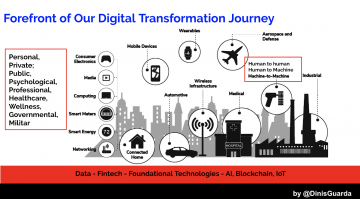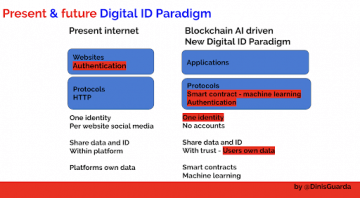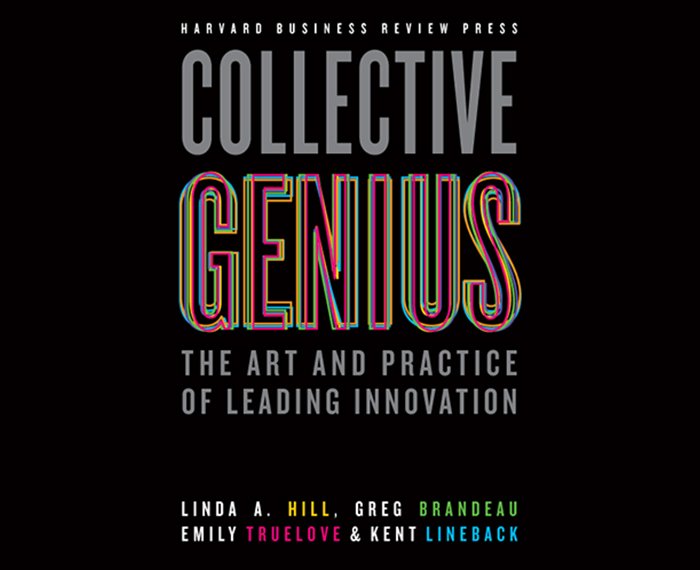
The Third Industrial Revolution
Digital Transformation and the 4IR – AI, Blockchain, IoT, Fintech is not a steady, fixed concept. It has evolved swiftly, over the course of various years, by gradual improvements of the technology, particularly the Internet, which fostered increasing digitization. Jeremy Rifkin, a US economist, futurist, and sociologist, who has analysed the shifts in society due to technology over the course of various decades, has written widely about the topic. He was the first one to tackle the impact of digital technologies and how these were triggering what he saw as a profound industrial shift.
He described that shift, which he called “third industrial revolution”, in his book “The Third Industrial Revolution; How Lateral Power is Transforming Energy, the Economy, and the World” (2011). In it, he suggested that leaps in evolution happen when there is a confluence of new communication technology, new forms of energy supply, and new transportation mechanisms. His argument is that when these three processes mature, they will augment their aggregated efficiency, and trigger a profound shift in our society.
In his view, this was exactly what happened during the first and second Industrial Revolutions, and what he considers to be the starting point of the third Industrial Revolution.
What were the technologies that converged in those 3 moments of the Industrial Revolution?
- The first Industrial Revolution (19th century) was caused by the convergence of steam-power, letterpress printing, and railways.
- The second industrial revolution (during 20th century) can be attributed to electric communication, and the combustion engine, as well as road transportation.
- The third industrial revolution is triggered by the co-occurrence of the internet, renewable energies, and sustainable mobility.
Rifkin’s argument focused around his analysis of developed economies. His insight was that the only way these would further increase their aggregate productivity in considerable ways (which is considered to be stagnated since the 1990s), is if they developed an architecture of connected and data driven technologies (cloud, AI, IoT) that would increase energy efficiency in terms of production and distribution. This would also foster what he called a “low carbon economy”.
Dealing With Extreme Quantities of Data
Since the invention of the iphone, in 2007, an even bigger shift has occurred, which has further deepened the process of digitization happening in the world. What is triggering it, is the widespread adoption of smartphones. These are enabling and expanding the digitization process – which began by being mostly a western phenomenon – to all corners of the world. There are now more mobile phones than people, as according to data from digital analysts at GSMA Intelligence, the number of active mobile devices and human beings crossed over somewhere around the 8.19 billion mark.
The result of that expansion in digitization is the escalating amounts of data being produced everyday. That data results also from the increasing number of sensors/actuators and the expansion of the Internet of Things (IoT). Over the past decade, the cost of sensors decreased immensely, whereas the processing capacity and availability of low-cost bandwidth augmented.
The exponential increase in data has led to profound developments in radical technologies such AI, Blockchain, IoT, and Fintech, triggering now a further shift in terms of industrial revolution. The shift has been quicker than we expected it to be and it is leading us towards the fourth industrial revolution. This is a revolution that intertwines humans and biological species even more with cyber systems. What is enabling that shift, is what Erik Brynjolfsson and Andrew McAfee call the second machine age.
The Second Machine Age and the 4 Industrial Revolution
“Digital technologies are doing for human brainpower what the steam engine and related technologies did for human muscle power during the Industrial Revolution. They’re allowing us to overcome many limitations rapidly and to open up new frontiers with unprecedented speed. It’s a very big deal. But how exactly it will play out is uncertain.” – Erik Brynjolfsson
In 2004 Erik Brynjolfsson and Andrew McAfee wrote a book called “The Second Machine Age: Work, Progress, and Prosperity in a Time of Brilliant Technologies” describing the consequences of the latest stages of the digital transformation and how it was leading us to the fourth industrial revolution.
According to Brynjolfsson and McAfee, exponential gains in computing, digitization of goods, and recombinant innovation are all driving rapid technological growth. Technology has begun to perform advanced mental tasks—like driving cars and understanding human speech—that were previously thought to be impossible.
Professor Klaus Schwab, the founder and Executive Chairman of the World Economic Forum calls those advanced mental tasks, resulting from AI’s machine learning and deep learning, “cognitive automation” (possibilities), and states that these have emerged as a “natural” prolongation out of the fundamentals of IT and mechanistic automation which started around 1969. (Schwab, 2016). Cognitive automation is what makes the current industrial revolution fundamentally different from the previous ones and the shift to what we call now the 4th industrial revolution – 4IR.
The 4th Industrial Revolution
Klaus Schwab describes the 4IR in the following way:
“It is characterized by a range of new technologies that are fusing the physical, digital and biological worlds, impacting all disciplines, economies and industries, and even challenging ideas about what it means to be human”.
What characterizes the 4IR, says Schwab, are the three following things: “velocity, scope, and systems impact.”
He writes:
“Moreover, it is disrupting almost every industry in every country. And the breadth and depth of these changes herald the transformation of entire systems of production, management, and governance”‘.
He further explains how the 4IR is different from the previous revolutions due to its impact on biology. “Digital fabrication technologies, meanwhile, are interacting with the biological world on a daily basis. Engineers, designers, and architects are combining computational design, additive manufacturing, materials engineering, and synthetic biology to pioneer a symbiosis between microorganisms, our bodies, the products we consume, and even the buildings we inhabit.”
In a nutshell, what the fourth industrial revolution is fueled by (and also fostering) are a series of deep shifts in technology producing all kinds of megatrends happening in the world. Some of these are:
-
- A Supercomputer in Your Pocket
- Storage for All
- The Internet of and for Things
- The Connected Home
- Smart Cities
- Big Data for Decisions
- Driverless Cars
- Artificial Intelligence, automation and Decision-Making
- AI and White-Collar Jobs
- Robotics and Services
- Bitcoin and the Cryptocurrencies – tokenization
- Blockchain
- The Sharing Economy
- The Circular Economy
- Governments and the Blockchain
- 3D Printing and Manufacturing
- 3D Printing and Human Health
- 3D Printing and Consumer Products
- Designer Beings
- Neurotechnologies
In Business, the fourth Industrial Revolution is set to have four main effects across industries:
– transformed, more demanding, and conscious customer expectations
– products routinely and quickly enhanced by data, which improves asset productivity
– new partnerships being formed as companies learn the importance of new forms of collaborative innovation and the values of the circular economy
– novel operating models and organizational forms which are on one hand more automated, on the other flatter and more peer to peer.
According to Schwab one of the major of disruptions of the 4IR is automation. In his view, machines will be able to simultaneously take over from humans ever more demanding cognitive tasks (i.e.movement, face, voice and text recognition and deep learning), in combination with increasingly complex motor tasks.
Digital Transformation and the 4IR – AI, Blockchain, IoT, Fintech part 1
Digital Transformation and the 4IR – AI, Blockchain, IoT, Fintech part 3

Dinis Guarda is an author, academic, influencer, serial entrepreneur, and leader in 4IR, AI, Fintech, digital transformation, and Blockchain. Dinis has created various companies such as Ztudium tech platform; founder of global digital platform directory openbusinesscouncil.org; digital transformation platform to empower, guide and index cities citiesabc.com and fashion technology platform fashionabc.org. He is also the publisher of intelligenthq.com, hedgethink.com and tradersdna.com. He has been working with the likes of UN / UNITAR, UNESCO, European Space Agency, Davos WEF, Philips, Saxo Bank, Mastercard, Barclays, and governments all over the world.
With over two decades of experience in international business, C-level positions, and digital transformation, Dinis has worked with new tech, cryptocurrencies, driven ICOs, regulation, compliance, and legal international processes, and has created a bank, and been involved in the inception of some of the top 100 digital currencies.
He creates and helps build ventures focused on global growth, 360 digital strategies, sustainable innovation, Blockchain, Fintech, AI and new emerging business models such as ICOs / tokenomics.
Dinis is the founder/CEO of ztudium that manages blocksdna / lifesdna. These products and platforms offer multiple AI P2P, fintech, blockchain, search engine and PaaS solutions in consumer wellness healthcare and life style with a global team of experts and universities.
He is the founder of coinsdna a new swiss regulated, Swiss based, institutional grade token and cryptocurrencies blockchain exchange. He is founder of DragonBloc a blockchain, AI, Fintech fund and co-founder of Freedomee project.
Dinis is the author of various books. He has published different books such “4IR AI Blockchain Fintech IoT Reinventing a Nation”, “How Businesses and Governments can Prosper with Fintech, Blockchain and AI?”, also the bigger case study and book (400 pages) “Blockchain, AI and Crypto Economics – The Next Tsunami?” last the “Tokenomics and ICOs – How to be good at the new digital world of finance / Crypto” was launched in 2018.
Some of the companies Dinis created or has been involved have reached over 1 USD billions in valuation. Dinis has advised and was responsible for some top financial organisations, 100 cryptocurrencies worldwide and Fortune 500 companies.
Dinis is involved as a strategist, board member and advisor with the payments, lifestyle, blockchain reward community app Glance technologies, for whom he built the blockchain messaging / payment / loyalty software Blockimpact, the seminal Hyperloop Transportations project, Kora, and blockchain cybersecurity Privus.
He is listed in various global fintech, blockchain, AI, social media industry top lists as an influencer in position top 10/20 within 100 rankings: such as Top People In Blockchain | Cointelegraph https://top.cointelegraph.com/ and https://cryptoweekly.co/100/ .
Between 2014 and 2015 he was involved in creating a fabbanking.com a digital bank between Asia and Africa as Chief Commercial Officer and Marketing Officer responsible for all legal, tech and business development. Between 2009 and 2010 he was the founder of one of the world first fintech, social trading platforms tradingfloor.com for Saxo Bank.
He is a shareholder of the fintech social money transfer app Moneymailme and math edutech gamification children’s app Gozoa.
He has been a lecturer at Copenhagen Business School, Groupe INSEEC/Monaco University and other leading world universities.






























